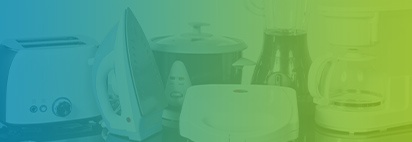Recyclability : concept and obligations
If you put on the market new equipment
find below how to display the recyclability of your products
What is recyclability?
The legal definition
Who is concerned ?
Within what timeframe?
Our recyclability assessment tools
EEE, SLA, Thermal DIY
FAQ Ministry of Ecological Transition
Official Frequently Asked Questions
Recyclability labelling: an obligation for producers under the AGEC law
In terms of consumer information, the AGEC law (2020) requires producers of new equipment to
- display the sorting instructions for the new equipment they put on the market
- display the recyclability and other Environmental Qualities and Characteristics (EQC) of products marketed under EPR schemes.
This obligation is set out in article 13 of the AGEC law and established in the French Environment Code:
Art. L. 541-9-1. – In order to improve consumer information, producers and importers of waste-generating products shall inform consumers, by means of marking, labeling, display or any other appropriate process, about their environmental qualities and characteristics, in particular the incorporation of recycled material, the use of renewable resources, durability, compostability, reparability, reusability, recyclability and the presence of hazardous substances, precious metals or rare earths, in coherence with European Union law. [...]
Lire l'article de loi L. 541-9-1
Recyclability: in 4 essential key points
- Displaying a product's recyclability on the label, product data sheet or any other medium intended to inform the consumer is a new obligation for producers, resulting from the AGEC law.
- Not all marketers are concerned by this consumer information obligation. This obligation will be phased in between 2023 and 2025, depending on the entity's sales and the number of units placed on the French market under the Extended Producer Responsibility (EPR) scheme. (For more details, see "Who is concerned?").
- Recyclability is defined as the technical capacity to be recycled. The decree implementing the law has defined 5 criteria for characterizing the recyclability of a product, as well as QCE (Environmental Qualities and Characteristics): see below the extract from decree n°2022-748 or consult the decree here (in French).
- What you display on the label or product data sheet therefore depends on these 5 criteria. The information to be displayed is as follows:
- either no mention, if the product does not meet at least one of the 5 recyclability criteria
- "majoritairement recyclable" ("mainly recyclable"), if the product is more than 50% recyclable
- "entièrement recyclable" ("fully recyclable"), if the product is more than 95% recyclable.
To find out how to assess the recyclability of your product, see our calculation tools below.
⚠️ Caution : In accordance with article L.541-9-5 of the French Environment Code, marketers who fail to comply with their legal obligations may be subject to administrative penalties.
Check out the official documentation - please use a translation tool
👉 Article 13 of AGEC law on legifrance.gouv.fr (in French)
👉 Decree n°2022-748 on legifrance.gouv.fr (in French)
All you need to know about the consumer information
The obligation to display sorting instructions (art. 17) :
👉 Sort wasting guide for EEE
👉 Sort wasting guide ASL
👉 Sort wasting guide ABJ Th
For any information related to the "packaging" sorting info or any other EPR sector, please contact the relevant EPR schemes.
The obligation to display EQCs (Environmental Qualities and Characteristics) (art. 13) :
In addition to recyclability, there are other EQCs to be displayed on the "product sheets" describing the product's characteristics for the consumer.
What are they?
There are 12 EQC
- incorporation of recycled material
- use of renewable resources
- durability
- compostability
- repairability
- reusability
- recyclability
- presence of hazardous substances
- presence of precious metals
- presence of rare earths elements (REE)
- traceability
- presence of plastic microfibers.
How this information has to be made available to consumers? The answer is: in a "product sheet"
This information has to be made available on a digital support and, where applicable, in accordance with the procedures defined by the law decree, by display, labeling or any other legible and comprehensible support, at the moment of purchase. [...] The format in which data relating to these environmental qualities and characteristics is made available to consumers must be easily reusable and usable by an automated processing system in aggregate form.
For all household EPR schemes, it is compulsory to display all EQCs on the product sheet for all new equipment. This sheet must be entitled "Product sheet on environmental qualities and characteristics".
👉 See the list of all EQCs by sector on page 3 of the FAQ from the French Ministry of Ecological Transition (in French)
Specific case: recyclability
In order to determine which statement to put on the product ("nothing" / "mostly recyclable" or "fully recyclable"), you need to be able to evaluate the recyclability of your product.
You have the obligation to use the recyclability assessment methods provided by your EPR schemes.
Please use our recyclability assessment tools, for the sectors Ecologic is in charge: EEE, SLA, and Thermal DIY (see below).
To evaluate the recyclability of other products of other EPR sectors, please refer to the other eco-organizations in charge of their EPR sector(s).
Who is concerned?
According to decree no. 2022-748, the public concerned are: producers, importers, distributors or other marketers of waste-generating products intended for consumers, including those using a website, platform or other online distribution channel as part of their commercial activity in France, and consumers of these products.
⚠️ However, not all marketers are covered by this consumer information obligation. Application criteria depend on sales and the number of units placed on the market. Please note that the professional EEE sector is not concerned.
| Am I concerned? | |
| I am a producer and importer, I declare annual sales over €10M for products subject to EPR placed on the French market AND I am responsible for placing more than 10,000 units of these products on the market each year | ✔️ Yes |
| I am a producer and my sales from products subject to EPR placed on the French market do not exceed €10M | ❌ No |
| I am a producer and the number of products subject to EPR placed on the market in France is less than 10,000 units | ❌ No |
| I am a producer of professional and household EEE equipment (if annual sales exceed €10M AND more than 10,000 units are marketed per year) | ✔️ Yes (on household EPR) |
| I am a producer of professional EEE equipment only | ❌ No |
Source : decree n°2022-748.
Schedule
Decree n°2022-748 also establishes a phased implementation according to the number of units placed on the French market (MSM) and associated sales (CA):
January 1st, 2023(1)
Producers with sales > €50m
and MSM > 25,000 units / year
January 1st, 2024(2)
producers with sales > €20 M
and MSM > 10,000 units / year
January 1st, 2025
manufacturers with sales > €10 M
and MSM > 10,000 units / year
According to article 13 of the AGEC law and decree N°2022-748 on consumer information, only household EEEs are concerned by this obligation, professional EEEs are not.
(1) Concerning the EEE sector, the FAQ published by the public authorities indicates that a tolerance period will be applied until July 1, 2023 for the transmission of calculation methods by EPR schemes, with manufacturers having 3 months from this transmission to implement the information in their product sheets.
(2) The obligation for ASL and ABJ will only be effective from January 1, 2024 (article 3 paragraph II of decree 2022-748).
How to calculate the recyclability of your products?
How do you know whether your product is "non-recyclable", "mostly recyclable" or "fully recyclable"?
Find out below about the calculation methodologies Ecologic has developed for the 3 EPR streams EEE, SLA, Thermal DIY
Discover our recyclability assessment tools
EQC (Environmental Qualities and Characteristics) to be displayed for SLA, Th DIY and EEE streams
In addition to recyclability, you must also display other Environmental Qualities and Characteristics.
Below are the EQCs for SLA, Th DIY and EEE.
| Characteristics | SLA | Th DIY | EEE |
|---|---|---|---|
| I. Repairability / Durabilité | ❌ No | ❌ No | ✔️ Yes (if relevant*) |
| III. Incorporation of recycled materials | ✔️ Yes | ✔️ Yes | ✔️ Yes |
| VI. Recyclability | ✔️ Yes | ✔️ Yes | ✔️ Yes |
| VII. Precious metal | ❌ No | ❌ No | ✔️ Yes |
| VIII. Terres rares | ❌ No | ❌ No | ✔️ Yes |
| IX. Hazardous substances | ✔️ Yes | ✔️ Yes | ✔️ Yes |
Decree no. 2022-748 of April 29, 2022 specifies how these obligations are to be applied, through articles R 541-220 to R541-223 of the Environmental Code. The decree also stipulates that information on recyclability is to be communicated to producers by the eco-organization to which they belong, where appropriate with the provision of a calculation tool based on a harmonized method.
*Only 9 items of electrical and electronic equipment are covered by the reparability index: see page https://www.ecologie.gouv.fr/indice-reparabilite (in English below the information in French, at the bottom of the page)
👉 See the list of all QCEs by sector, page 3 of the FAQ from the French Ministry of Ecological Transition (in French)
Further information
Recyclability criteria defined by law
Extract from decree no. 2022-748:
Recyclability is defined as the capacity to effectively recycle waste from identical or similar products. Recyclability is characterized for these wastes by :
- The ability to be efficiently collected on a regional scale, via the population's access to local collection points;
- The ability to be sorted, i.e. directed towards recycling channels for recycling;
- The absence of elements or substances that interfere with sorting and recycling, or limit the use of recycled material.
- The capacity for the recycled material produced by the recycling processes implemented to represent more than 50% by mass of the waste collected.
- The capacity to be recycled on an industrial scale and in practice, in particular by guaranteeing that the quality of the recycled material obtained is sufficient to ensure the sustainability of the application markets, and that the recycling chain can justify a good capacity to take on products that can be integrated into it.
This information is communicated to the producer by the EPR schemes to which it has transferred its extended responsibility obligation under article L. 541-10, where applicable with the provision of a tool for calculating the recyclability of the product using a harmonized method. Where the producer has set up an individual extended responsibility system, he is responsible for determining this information.
⚠️the EPR scheme provides the method, but the marketer is responsible for the recyclability assessment of its products
Please note that those topics are in discussion at European level, under the EcoDesign for Sustainable Products Regulation (ESPR).





